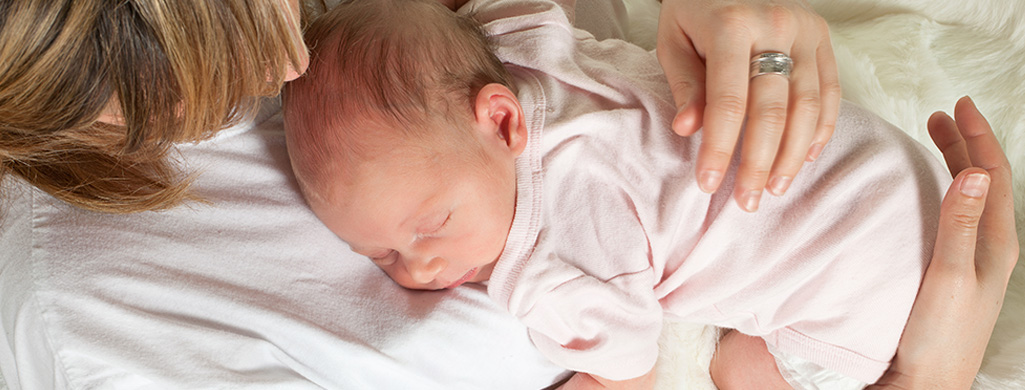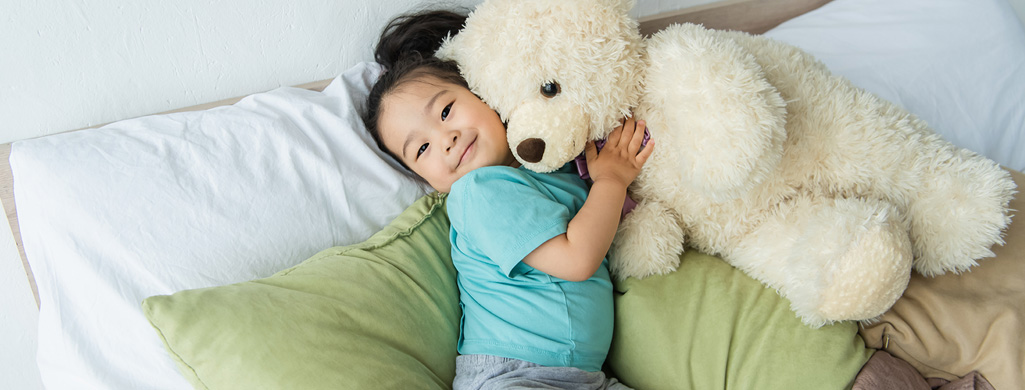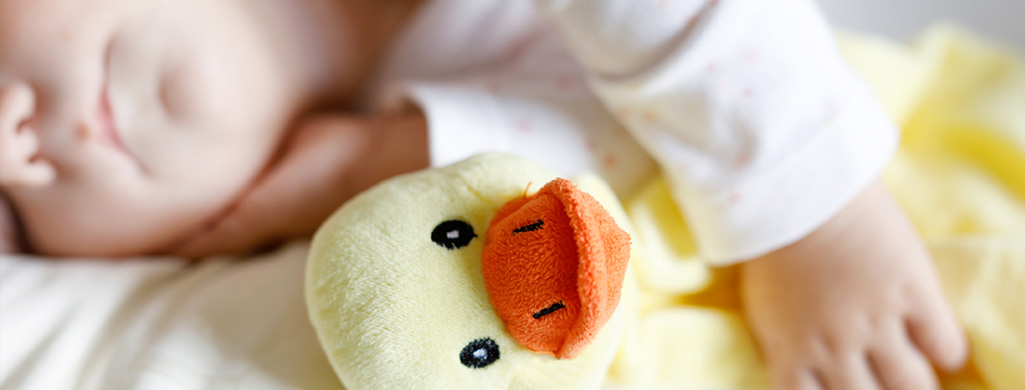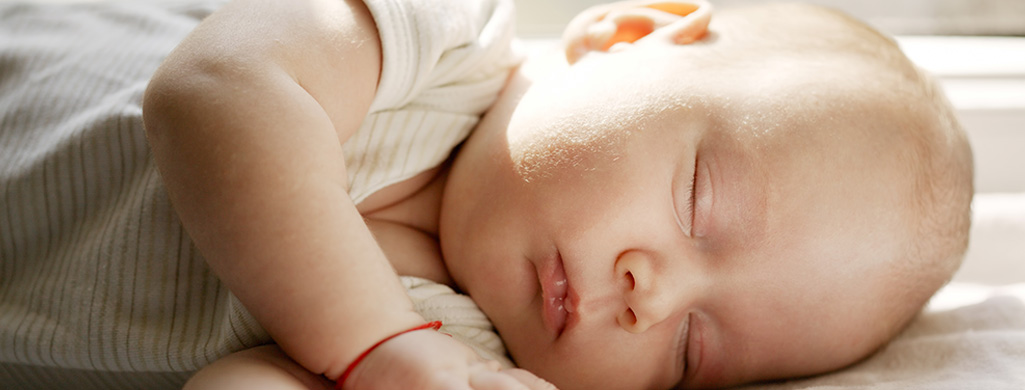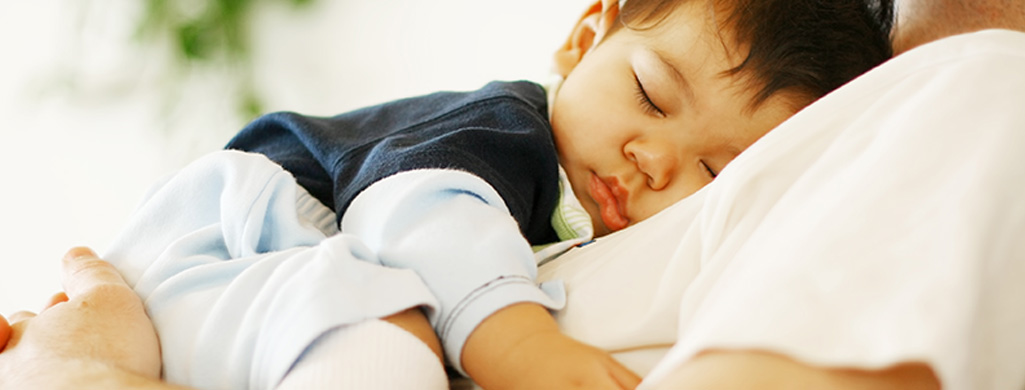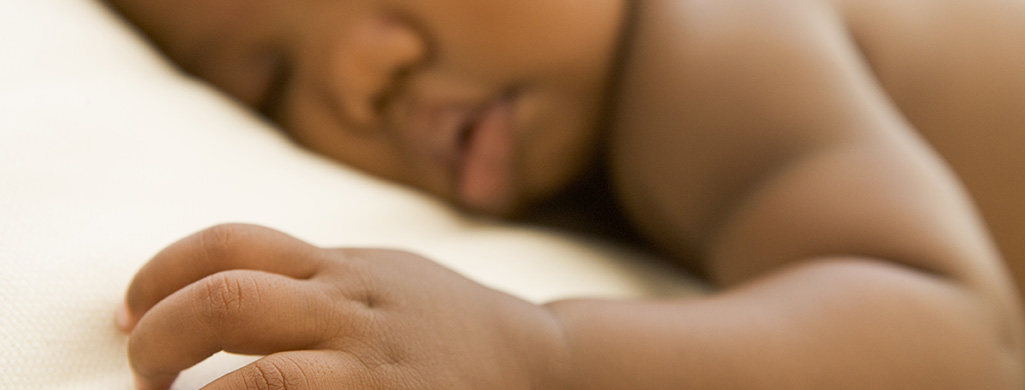As parents of an 18-month-old child, you may already be familiar with the wide variety of sleep issues your child may experience. Whether it be waking up multiple times a night, refusing to nap, or making sleep difficult in some other way, the topic of sleep is one that can cause frustration and stress.
The good news is that while it may take some time, you can help your child develop healthy sleep habits and sleep better in the long run. Here, we’ll explore the importance of sleep for 18-month-olds and offer some tips to help you and your little one get some quality rest.
Can an 18-Month-Old-Baby Sleep Through the Night?
Absolutely. Unless your child has a medical condition or developmental issue that prevents them from sleeping, and there are no external factors, such as a hot, humid night, there’s no reason why a toddler of this age cannot sleep through the night.
At 18 months, the average toddler needs between 11 and 14 hours of sleep in each 24-hour period. This is split between 10 to 12 hours of sleep at night and roughly two hours of nap time in the afternoon.
The exact timing of this sleep doesn’t matter as long as the timing is consistent every day. For example, if your family has an earlier-in-the-day schedule, you might have a bedtime of 7 p.m. and then rise and shine at 6 a.m. Alternatively, if you have a later schedule, a 9 p.m. or even 10 p.m. bedtime is fine as long as this is balanced by a later, consistent. waking time.
Sample Sleep Schedule for an 18-Month-Old Child
| 7:00 am | Time to Wake up |
| 12:30 pm | Nap time |
| 3:00 pm | Wake from nap |
| 7:00 pm | Start the bedtime routine |
| 7:30 pm | Bedtime |
| 6:30 am | Time to rise and shine |
| 11:00 am | First nap |
| 12:30 pm: | Wake from nap |
| 3:30 pm | Second nap time |
| 4:30 pm | Wake from second nap |
| 8:30 pm | Start the bedtime routine |
| 9:00 pm | Bedtime |
Common Sleep Issues for an 18-Month-Old Child
Just as with any other age group, toddlers can experience changes to their sleep schedule, even when they have been enjoying a solid night’s sleep for many months.
During the night, it is essential not to “reward” your child for waking up. Instead, the first time your child wakes, you should check they are at a comfortable temperature and do not need a diaper change. After that, look in on your baby and reassure them you are still here, but avoid going into the room or lifting them out of the crib.
Common Sleep Issues for an 18-Month-Old Child
Just as with any other age group, toddlers can experience changes to their sleep schedule, even when they have been enjoying a solid night’s sleep for many months.
The Problem: Sleep Regression
Sleep regression is the most common sleep issue in toddlers of this age. This difficult period is most likely the result of a sudden surge in growth. The same growth hormones that cause your toddler to suddenly become too big for all of their clothes at once can cause disruptions to the sleep cycle.
Combine these hormonal changes with the notoriously uncooperative disposition of a toddler, and you may have several nights and days of fitful sleeping and willful sleep avoidance.
The Solution:
There’s not a lot you can do about the causes of sleep regression. Your 18-month-old child is going to grow regardless of your sleeping needs! However, handle this sleep disruption badly; you can end up battling sleep issues for months.
To avoid making things any worse, it’s important to be consistent in your approach and not to reinforce sleep disruptive behaviors. To do this:
- Check your child is at an acceptable temperature, has a clean diaper, and is otherwise comfortable. Once you’re sure there are no issues, take them back to bed.
- While you’re checking their comfort, don’t chat, sing, play, make funny faces, or otherwise give your child overtly positive attention. Your child will see this as a reward for getting up, and you’ll unintentionally encourage them to keep waking, calling out, or getting up.
Simply smile, ask your kiddo if everything is ok, take a peek into their diaper and lay them back down. - If your toddler keeps getting out of their crib or bed, take them back, lay them back down and calmly but firmly tell them it’s time to sleep.
- Don’t allow your child to get up and rejoin the rest of the family, play games, or do anything other than go back to bed.
- The next day, make a point of talking to your toddler about sleep. Tell them that everyone has a bedtime and that they cannot keep getting up. Reassure your child that you will always check they are ok, but then you will also always put them back to bed.
The Problem: Teething
Canine teeth begin to come through at around 16 months, and the first molars begin irrupting at roughly 17 months, so your 18-month-old toddler is highly likely to be experiencing teething.
You would be forgiven for thinking that because molars have a much larger surface area than the incisors or canines, they would be the most painful teeth to come through. However, the opposite is true, and it is not unusual to discover a toddler has molars without even realizing they were teething.
However, they may experience some pain and discomfort, which, unsurprisingly, can affect their sleep.
The Solution:
If your toddler is teething, give them something like a damp washcloth to bite down on during the day and children’s pain relief at night. While it may be tempting to lift them up onto your lap and cuddle your little one off to sleep, try to resist. In the long run, this will disrupt their established sleep routine.
Instead, rub your little ones’ back or belly, talk to them in a soothing voice and only give hugs or cuddles if they are deeply distressed.
The Problem: The Wrong Environment
Like adults, toddlers can have trouble getting to or staying asleep if they are too hot, too cold, or otherwise uncomfortable.
The Solution:
By 18 months, you can dress your child in the same number of layers as you wear, as long as they are roughly the same thickness. Keep the bedroom temperature at about 18.3 degrees Celsius or 65 degrees Fahrenheit.
If you have no way of cooling a room and it becomes excessively hot, ensure your toddler sleeps in just their diaper or diaper and a very thin tee-shirt. A cold, damp cloth can help, but don’t leave your child unattended with ice packs, ice cubes, ice pops, or anything similar.
If you cannot keep the room warm enough, dress your toddler in layers and provide multiple light bedcovers. Thick socks, gloves, or a woolly hat cat also help, but only use these if it falls below 15.5 celsius or 60 Fahrenheit.
The Problem: Life Changes
If something happens to their usual routine, or there’s a change in your toddler’s day-to-day life, your little one might experience changes to their sleep routine.
The change may be something obvious, such as a new baby, moving home, or a change in their parent’s relationship, or it can be something more subtle such as having a new staff member at daycare or a stuffed toy being washed and not smelling “right.”
The Solution:
Whenever possible, talk to your toddler about a change and prepare them for what’s to come. As far as you can get your child involved in what is going to happen, as this can give them a sense of control, which helps to curb anxiety and associated sleep issues.
For example, if you’ll be moving home, read stories about a child who moves, discuss the new home, or help them choose something for their new room.
Setting Up a Bedtime Routine for an 18-Month-Old
As soon as you have finished your evening meal, you can start thinking about bedtime. Some people see a bedtime routine as “bath-story-bed,” but the key to a less painful bedtime routine is creating a restful atmosphere before you get that far.
An effective bedtime routine might include:
An hour before bedtime
A half hour before bedtime
Time for a Big Kid Bed?
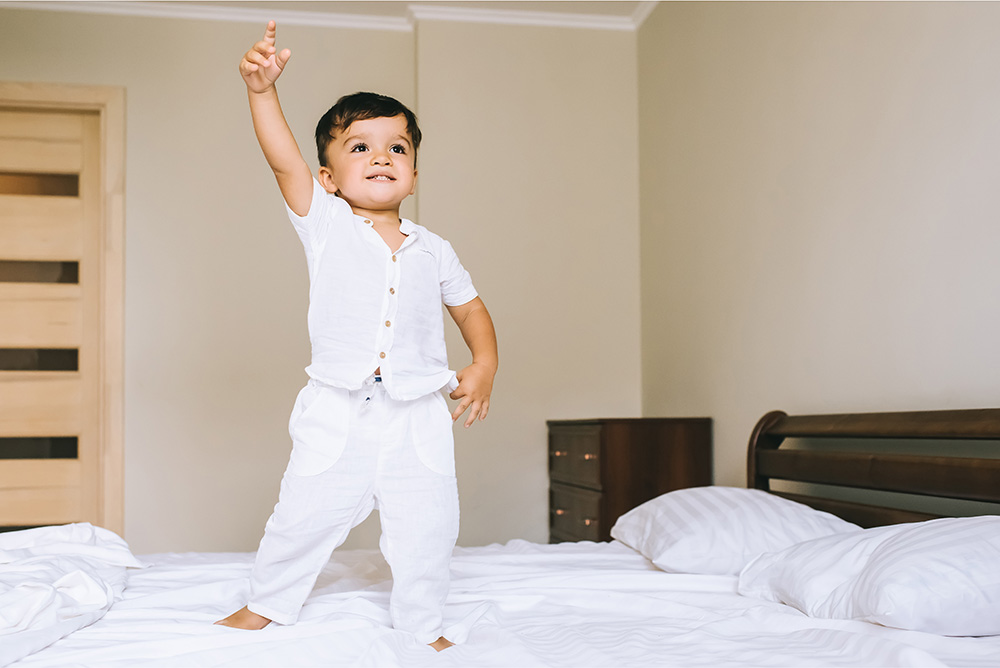
It’s tempting to move your toddler from the crib to a bed, or at least a scaled-down toddler bed, as soon as possible but try to resist the urge.
The crib provides a safer, more secure environment for your toddler, and this can be especially useful if your child is prone to getting up at night.
However, if your little one is climbing out of their crib, their chest is above railing level, or they have hit the three-foot tall mark, a bed will be a safer option.
When you do decide to move from the crib, there are three options:
- Toddler beds
- Standard twin beds,
- Montessori-style floor-level beds.
Toddler Beds
Toddler beds are smaller than standard twin beds and lower to the floor. They are often decorated with colorful characters
Pros:
- Most toddler beds take a crib mattress, so all of your existing crib bedding will fit.
- Colourful characters or novelty shapes, such as cars or castles, may make your toddler more enthusiastic about the move.
- Being closer to the floor, your child is unlikely to hurt themselves if they fall out of bed.
Cons:
- Your child may outgrow a toddler bed quite quickly, so you have the cost and the hassle of another change of bed.
- Being able to get out of bed more quickly, your toddler may start to get up and explore.
Standard Twin Beds
A twin is an easy-to-find, affordable option for an 18-month-old child’s first bed.
Pros:
- A twin bed will last throughout childhood.
- Some toddlers prefer moving into a “big bed,” which makes the transition easier.
- There are plenty of fun bedding options.
- A twin bed has room for lots of stuffed animals if your child needs them to feel secure.
Cons:
- After sleeping in the confines of a crib, some children feel insecure in the larger space of a twin bed.
- You’ll need a bedrail to prevent your child from falling out of bed and hurting themselves.
Montessori- Style Floor-Level Beds
Montessori-style beds are at floor level. Some come with structures such as house-shaped frames or short wooden fences.
Pros:
- Your child is unlikely to hurt themselves if they roll out.
- You can choose crib mattress-sized beds and use your existing bedding.
- Plain, low-key design can help create a restful sleeping atmosphere.
Cons:
- It is easy for your 18-month-old child to get up at night and wander the house.
My Personal Take on the Transition
With five kids, we’ve tried all three styles of first beds, and I’d recommend a hybrid approach. Moving the crib mattress to the floor gives you all of the safety upsides of a toddler or Montessori-style bed without the cost. Meanwhile, a stairgate on the bedroom door keeps your little one from roaming the house at night. Win!
- Sleep Schedule for a 2-Month-Old Baby - December 24, 2022
- Sleep Schedules for Your 18-month-old Toddler - December 23, 2022
- Sleep Schedule for a 6-Month-Old Baby - December 11, 2022

